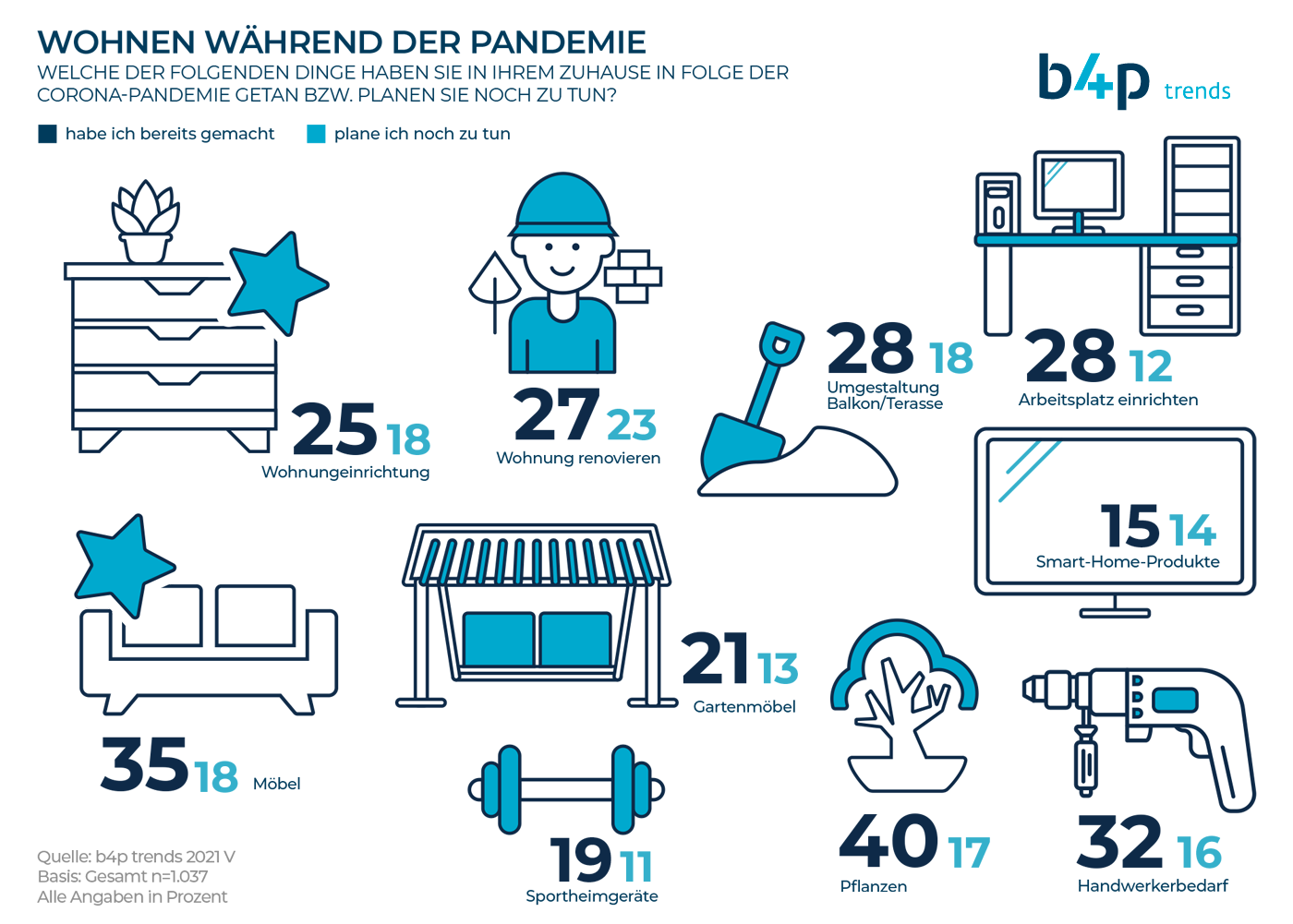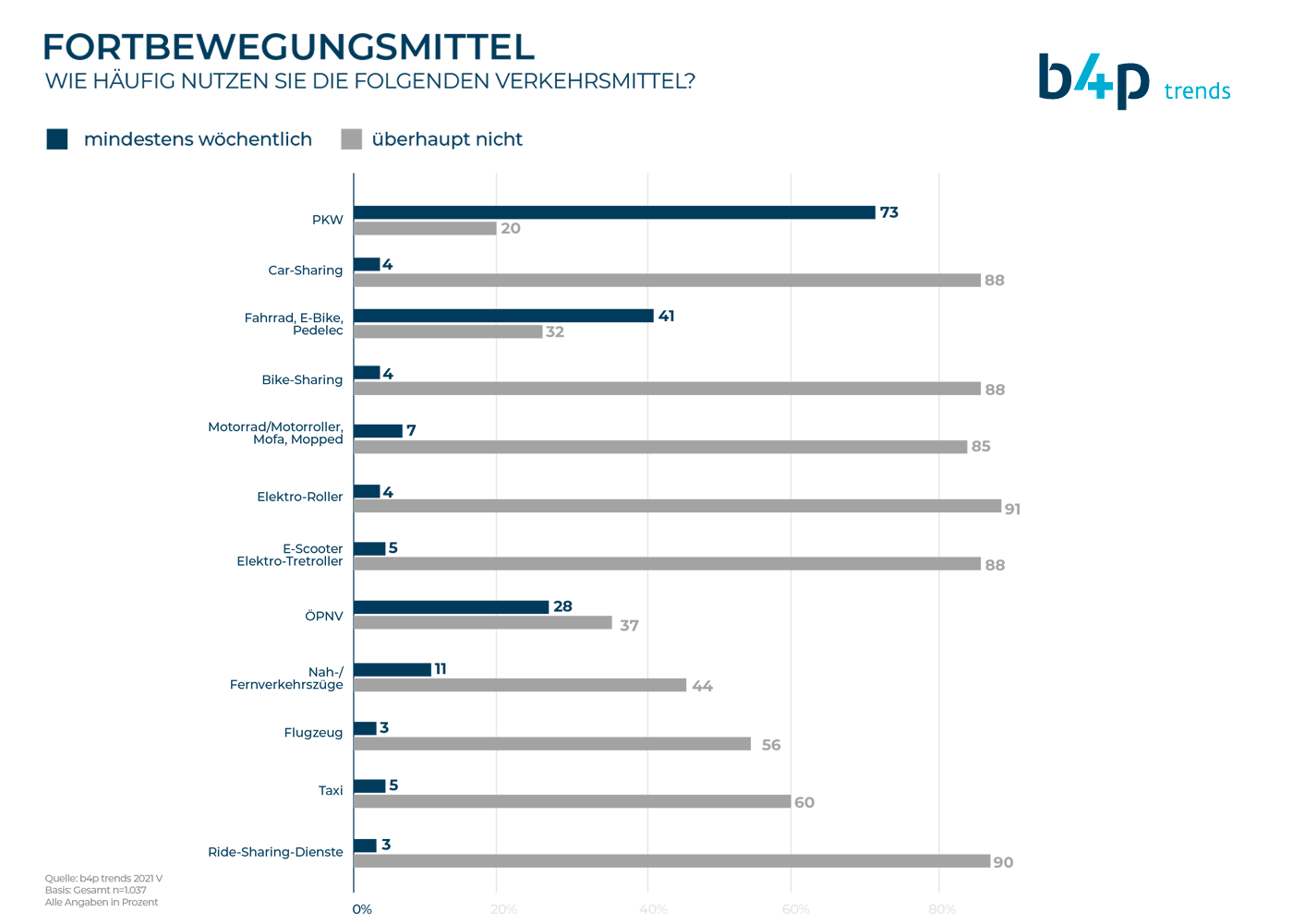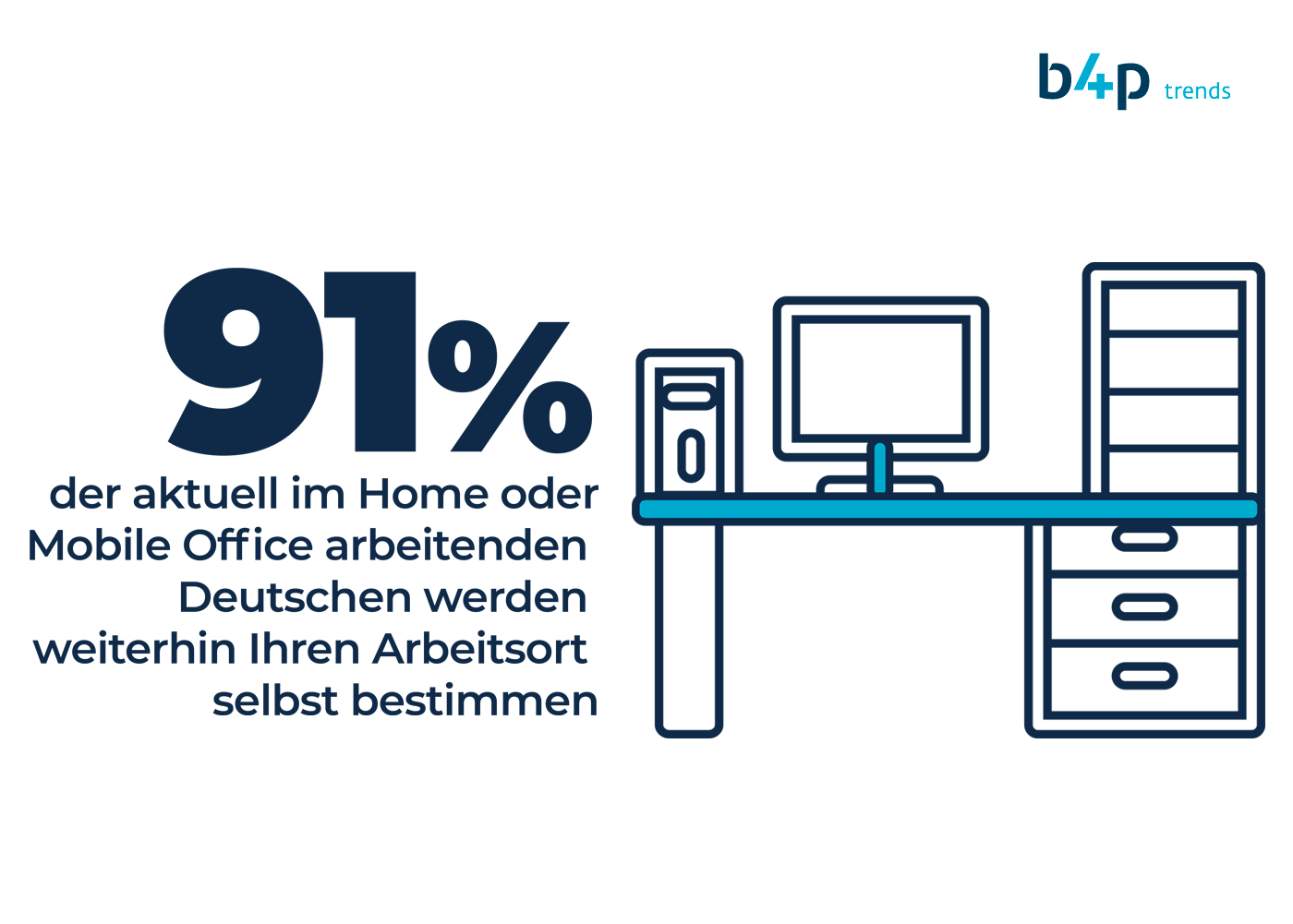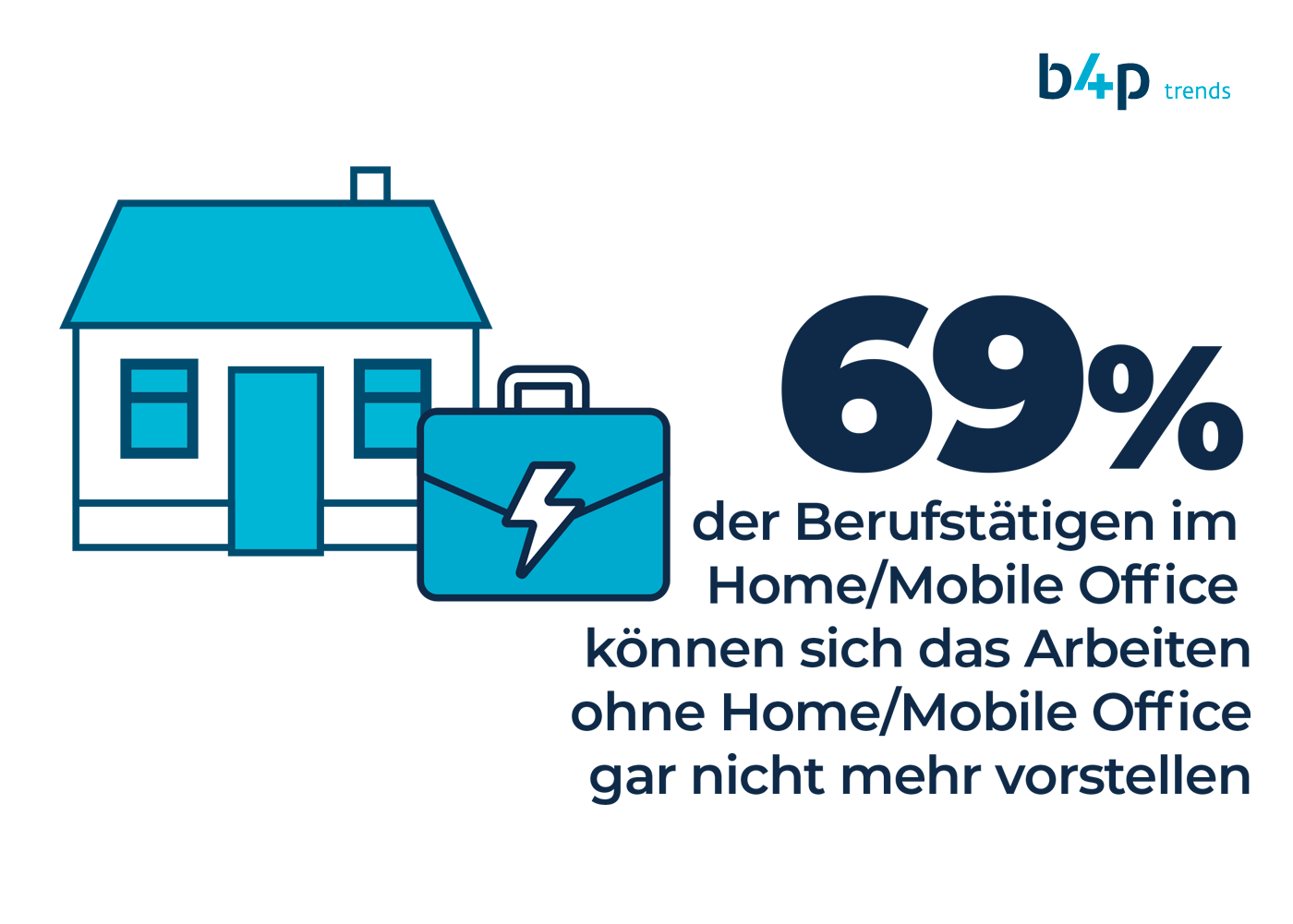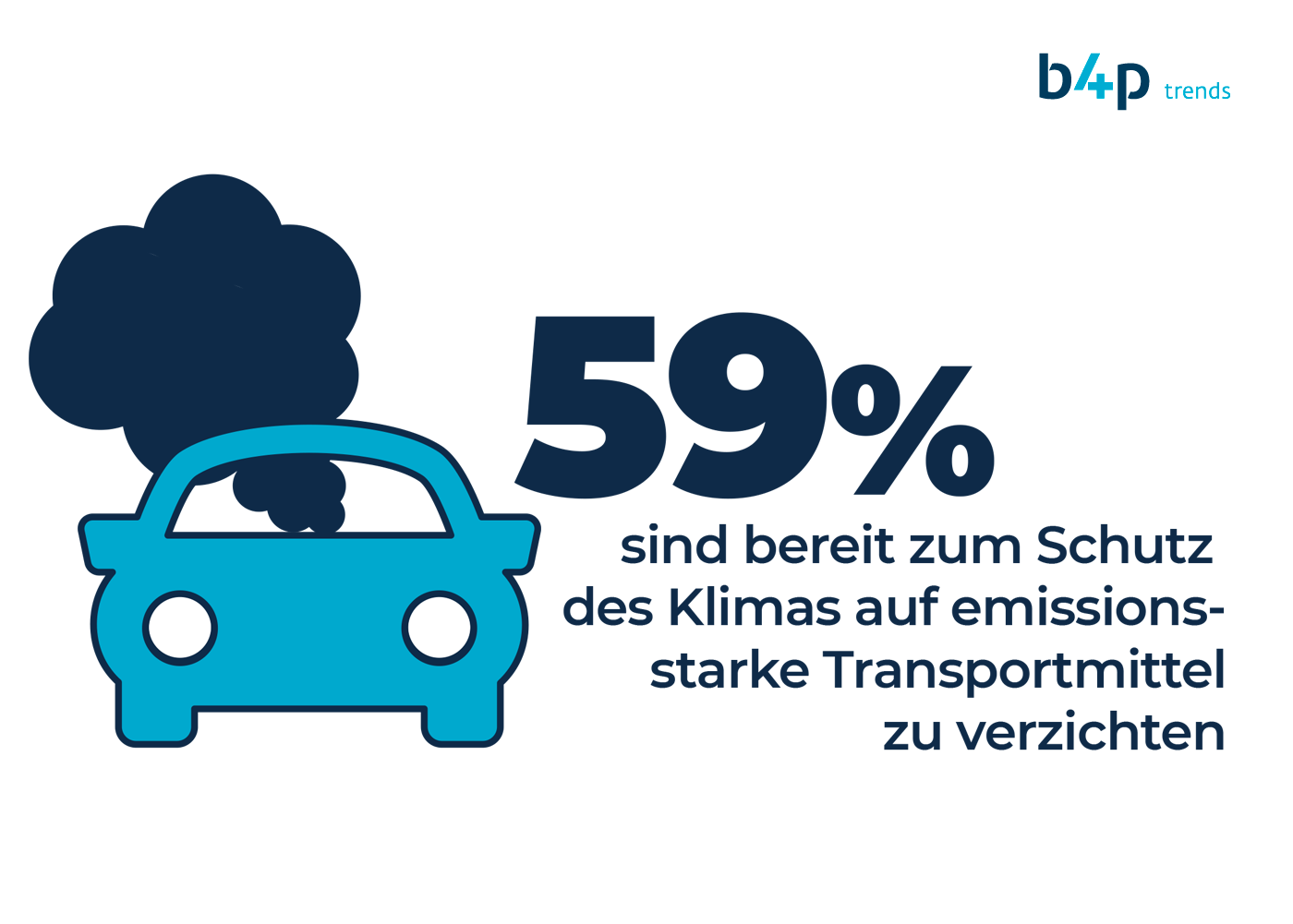

The global pandemic has turned the everyday life of Germans upside down – mobile working and working from home have left their mark. Will this continue to be the case, has the increased time spent in one’s own home had an impact on their design and has people’s mobility changed as a result of the new working conditions? The Gesellschaft für integrierte Kommunikationsforschung (Society for Integrated Communication Research, or GIK)[1] investigates this and other questions in its latest b4p trends survey.
Currently, around 41 per cent of workers work either from home or in a mobile office, and another approximately 13 per cent state that it would be possible for them to work from home. Just under half (49 per cent) of the workers who work from home or a mobile office work like this to three days per week, for 37 per cent, it is four to five days and around 14 percent have a variable time allocation for their choice of work location.
The home working environment has only become the new norm as a result of the Covid-19 pandemic for about 28 per cent of the affected workers, 46 per cent now work from home more often than before and for a quarter (26 per cent), nothing has changed in this respect. And this is likely to remain the case in the future. Ninety-one per cent of workers currently working from home (WFH) or in a mobile office state that they will continue to flexibly or at least partially determine their own place of work in the future.
Working from home is generally well received by Germans
The majority consider the new working environment to be positive. Eighty-six per cent of respondents get on well working from home, and 81 per cent like working from home. 69 per cent cannot even imagine working without the option to work from home. Furthermore, 91 per cent of the respondents agree that WFH allows more flexibility in everyday life and 65 per cent are even convinced that they can work more effectively from home. But there is also a flip side: for example, 66 per cent of Germans working from home miss the social contact with colleagues, and more than half (54 per cent) are happy to go to the office again and not have to work from home.
This ambivalence is also noticeable when it comes to childcare. Eighty-nine per cent of WFH workers with children believe that the new conditions have made it easier for them to supervise their children during day-care and school closures. But at the same time, 75 per cent admit that they cannot really take care of their children at when working from home. WFH is viewed more critically by Germans who continue to work in the office. Of this group, 69 per cent are happy not to have to work from home; for 28 per cent, this would not even be possible due to their Internet connection.
My home should be even more beautiful
The value of their own home has increased considerably for a large majority of Germans as a result of the pandemic. Around 83 per cent say that Covid-19 has made it more important for them to have a home where they feel comfortable. Accordingly, 45 per cent are now also more interested than before in topics related to living and furnishing, and 47 per cent, in everything related to the garden, balcony and patio.
This also directly leads to corresponding improvement measures. For example, 34 per cent wanted to change something about their housing situation as a result of the global pandemic – over a quarter (27 per cent) have already renovated their homes, and another 23 per cent are still planning to do so. In addition, 25 per cent bought new items to furnish their home. Germans find inspiration for their DIY projects primarily on the Internet (54 per cent). But TV programmes (27 per cent), magazines (26 per cent) and social media (27 per cent) are each also readily used for this purpose by more than a quarter for each group.
Mobility in transition – but the car remains the most popular means of transport
The feel-good factor at home also seems to transfer to the world outside one’s own home. Respondents in Germany indicated that their car is by far the most popular means of transport in their everyday lives. Seventy-three per cent use their own car at least once a week and a good third of those surveyed even use their own car every day. The bicycle, which is ridden by 41 per cent weekly and by 10 per cent daily, comes in second place. In turn, public transport is used by 28 per cent weekly and 9 per cent daily, and trains are used by 11 per cent and 2 per cent, respectively.
The global pandemic and the resulting restrictions have changed people’s behaviour when it comes to mobility – however, not as much as might have been expected. Around two thirds have maintained their driving behaviour even during the pandemic – even if currently more than 41 per cent of Germans tend to avoid public transport for fear of an increased risk of infection. The biggest changes can be seen in the use of aeroplanes and taxis. Eighteen per cent of Germans boarded a plane less frequently than usual during the pandemic, 10 per cent did not board a plane at all and around 15 per cent took a taxi less frequently.
Climate change has left significantly more traces in the minds of Germans where Covid-19 has failed to bring about real change. The majority of people (59 per cent) show a general willingness to forego high-emission means of transport in order to protect the climate, and half of the respondents are willing to change their travel behaviour (50 per cent). Around 71 per cent of Germans would be willing to forego using their car or motorbike if public transport became significantly cheaper. And around 56 per cent say they would get on their bikes more often if the cycle paths in the country were better developed.
At the same time, interest in electric vehicles is surprisingly still relatively low compared to combustion vehicles despite concerns for climate protection. The main factor that scares 70 per cent of respondents away from battery-powered vehicles is the high prices, and for 67 per cent, the current range of the cars (which is still low) is also a hurdle. In addition, 58 per cent find the still insufficient federal funding to be a deterrent.
The study results of all b4p trends issues published to date, as well as graphics, can be found on the GIK website at www.gik.media/b4p-trends.
